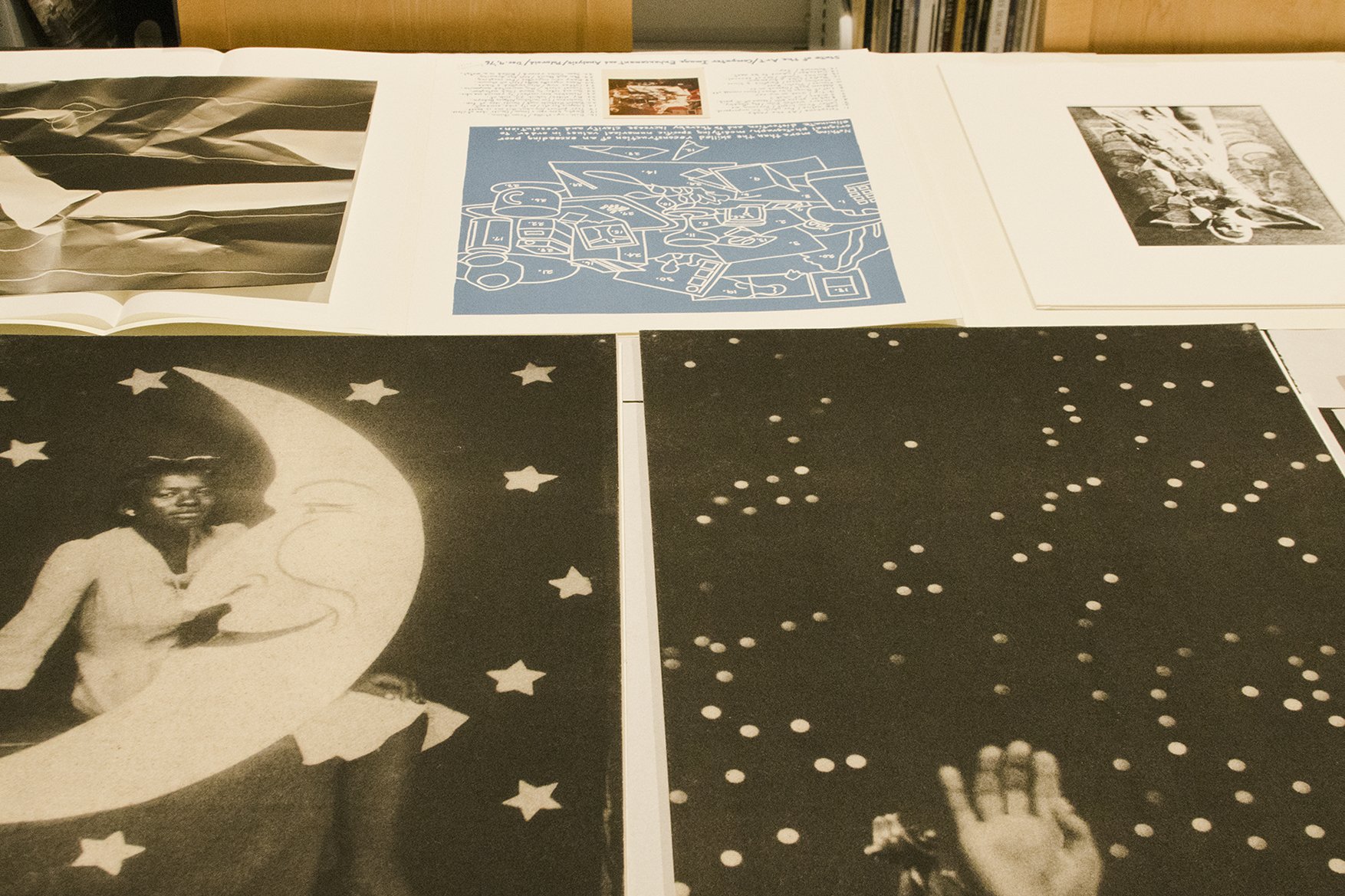Two Models for the Print Archive
As we patiently continue to work at home, we are looking back at a recent field trip to Los Angeles with a group of MFA candidates from UC Davis. Our trip coincided with visits to Frieze, Felix, Spring Break and Art Los Angeles Contemporary art fairs. Two highlights from our trip were visits to collections at the Grunwald Center for Graphic Arts at the Hammer Museum and LA Contemporary Archive.
The Grunwald Center for Graphic Arts holds a public collection accessible by appointment. Established in 1956 the collection includes an expansive gathering of prints ranging from the renaissance to the present day. The bulk of their collection represents Japanese woodblock prints, nineteenth century French and 20th century German Expressionism. It also includes work from LA’s printmaking history including many of the prints produced at the Tamarind Institute’s first printshop and the more recent intaglio work from Edition Jacob Samuel.
The prints I selected to show my graduate research seminar were intended to introduce an idea about how we might use for print collections by engaging with them as a resource for our studio research. This aspect of the collection and institutional programs such as the Hammer Museum’s exhibition series House Guest enables artists to redefine the collection by drawing connections between historic artworks and aspects of their individual practice. Working within print collections offers an opportunity to transcend the typical, academic, art historical timeline and create our own categories for viewing. A full list of selected works can be found at the foot of this page, many of the artists are associated with UCLA or exhibitions installed at the Hammer. A guiding principle of the choices was to select work that explores print’s relationship to photography and the mediated image.
Print is often described as a democratic medium and no-doubt what contributes most to this view is its potential for widespread dissemination. While collections such as the Grunwald have historically collected examples of fine art printmaking, there is also a parallel history of artists who have been utilizing commercial print media as a form of practice or document of their practice. This is often results in ephemeral work that cannot be categorized within the conventional structure of institutional departments. So as a counterpoint to the museum and the art fair models, we visited Los Angeles Contemporary Archive in Chinatown.
Los Angeles Contemporary Archive [LACA] was established in 2014 and has been located in the Asian Center in Chinatown since 2016. This non-circulating library is an artist-run space, dedicated to the preservation, study and production of materials and ephemera surrounding contemporary artistic production. The archive includes objects, artist’s books, texts, archives of artist-run spaces and digital / audio visual examples from local and international artists. The archive is searchable through their website.
During our visit with Executive Director, Hailey Loman and Archivist, Saida Largaespada we viewed examples from the archive produced around or after its founding in 2014. The specificity of this date is a guiding principle of their transparent and open acquisition process; they only acquire from that date onwards. An important aspect of their program is their artist-run initiative and role within the Los Angeles artists community. An artist centered approach aims to represent the work as faithfully as possible, this includes challenges such as keeping collections intact; preserving them in their entirety and working with artists to accurately assign metadata and descriptive language to their work. A fascinating conversation on their blog about the ethics and process of archiving and LACA’s approach is well worth a listen.
The Grunwald Center and LACA offer contrasting models of how idea of expanded print might be relevant to MFA students participating in a program that is not medium-specific. In this context we’re focused on the conceptual use of print; how a particular printmaking method relates to the artists broader practice, the invention of new visual forms and the memory of ephemeral actions, held for future communities within the print-archive.











